CONSUMER-INDUSTRIAL POLLUTION
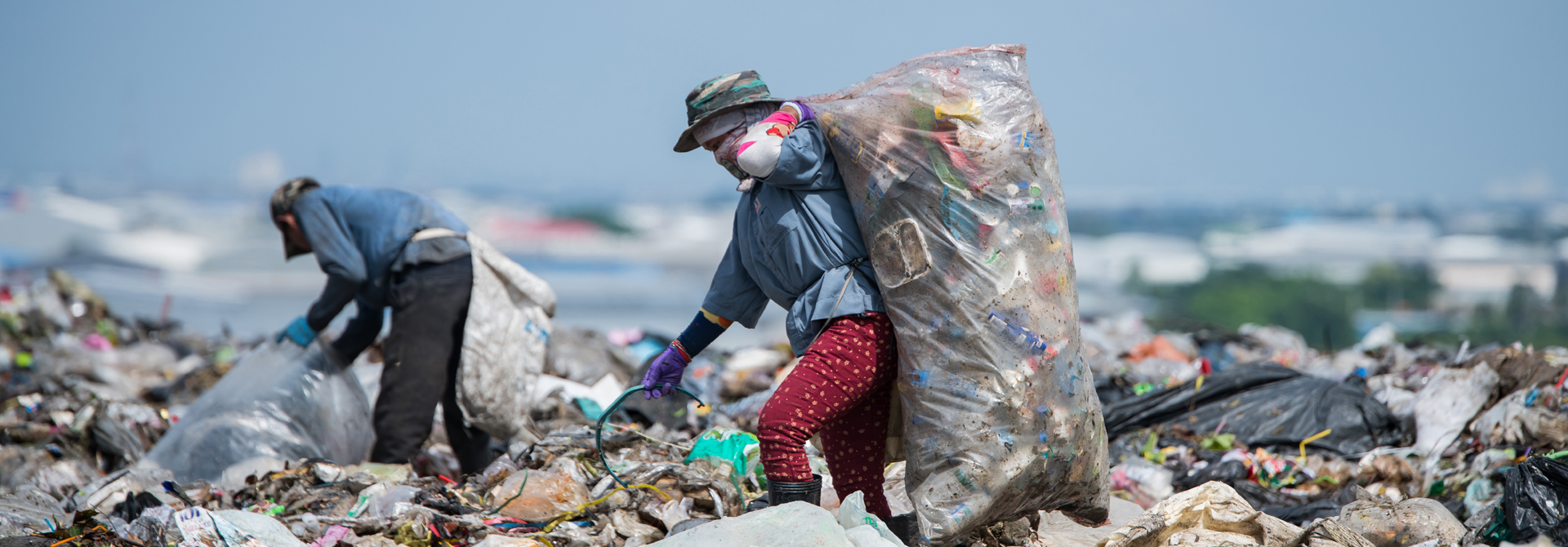
Waste Pollution is a dangerous by-product of modern industrial and consumer economy. It is found throughout all environmental media, and poses a long-term ecological and public health threat. Sources of pollution are numerous, and varied, ranging from large-scale industrial chemical releases, to combustion engine ambient PM2.5, as well as solid waste from nearly every social-economic sector including, commercial food, healthcare, electronics, automotive, and construction/development, and often ending up in surface water, groundwater, oceans, landfill, open dumping sites, or being openly incinerated. The geographic visualisation below depicts the status of total pollution (air pollution weighted) throughout the entire Asia region as of 2019 the algorithm of which was developed by NUMBEO. Six of the top 10 nations with the highest pollution index scores worldwide are found in Central and East Asia Pacific regions with Southeast Asia having the dubious distinction of seven nations with a score of 60 or higher (There was insufficient data to assess Lao PDR).
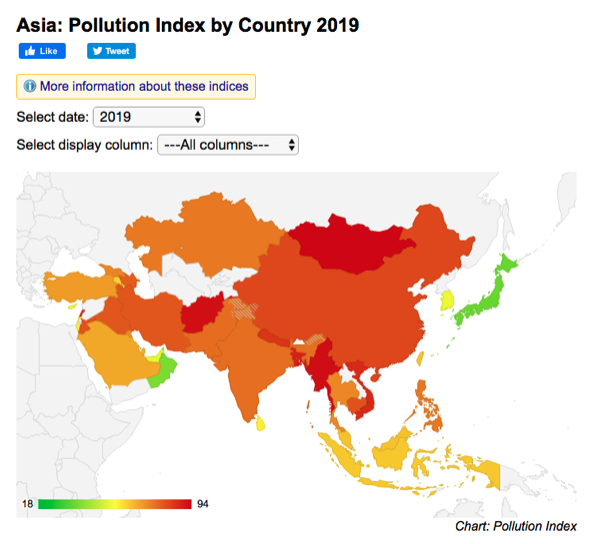
Pollution of all types found in land, air, or water are not only pervasive, but are responsible for substantial human health and ecological impacts. In 2012 alone, pollution was attributable to over 8 million fatalities worldwide disproportionately impacting low and middle income developing countries throughout the world (table below courtesy of Global Alliance on Health and Pollution).
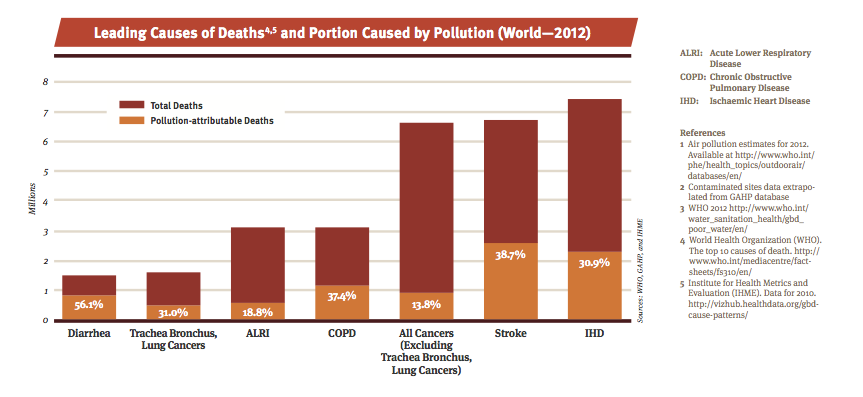
East and Southeast Asia continue to be heavily impacted by nearly all types of environmental pollution, especially among poor and middle-income nations within the region. According the 2015 Global Burden of Disease Study it is estimated that 60 percent of all deaths around the world due to pollution risk factors occur in the Asia-Pacific region.
A grim example, collective data from the World Health Organization’s (WHO) 2018 investigation into global air pollution, and its impact on children show that ambient PM2.5 air pollution yields nearly 21 deaths per 100,000 for all Southeast Asian children under the age of 5 (in low-to-middle income nations for the region); a mortality rate 138 times that of Canada and the United States combined.
Substantial solid waste increases, and its poor management continues to plague the majority of Southeast Asian nations (also referred to as the ASEAN region). Trend increases in population and urbanisation growth across ASEAN have been, and continue to be accompanied by significant increases in solid waste. A 2009 ASEAN “State of the Environment” report reveals estimates of municipal solid waste (MSW) reaching nearly 149 million metric tonnes with Indonesia generating by far the most with an upwards of 64 million tonnes (the most in terms of region-wide waste) followed by Thailand at nearly 27 million tonnes. On the other hand, Singapore waste generation per capita topped all other ASEAN nations by as much as seven times. The table below was accessed from the 2017 United Nations Environment Programme report on waste management in ASEAN.
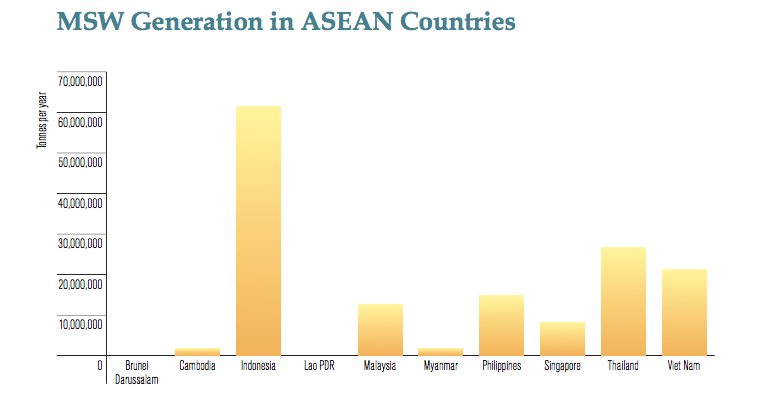
The sources of MSW are many, and varied, and include nearly every commercial, industrial, and government sector with ASEAN nations struggling to contain and manage this problem. For example, a 2017 WHO report found that 20 to 60 percent of the twenty-two developing nations across Asia-Pacific including Indonesia and Thailand do not have proper waste management systems to handle healthcare waste that according to the Basel Convention poses the second highest risk (behind nuclear waste) to human and ecological health.
Waste streams resulting from a modern East and Southeast Asian economy are especially diverse, in turn making them exceedingly hazardous. In general, regulated, and unsanitary landfill, that includes open dumping have been widely characterised to contain a dangerous cocktail of chemical hazards including, ammonia, benzene, dioxin, heavy metals, PCBs, and a variety of commercial pesticides among others. One study of landfill leachate for locations in Cambodia, Lao, and Thailand found total heavy metals concentrations in total dissolved liquid were several times higher than current effluent and groundwater standards (Xaypanya et.al., 2018).*
The emerging and increasing trends in plastics and electronics waste are also pause for concern. Plastics waste around the world elicit particular worry as certain plastic chemical components such as bis-Phenol A, phthalates, and polyvinyl chloride are known, or are highly suspected of causing adverse health effects. Moreover, its ubiquity throughout land, surface water, groundwater, and the oceans mean a greater chance of environmental exposures and ecological impact. The Asia-Pacific region, in particular China, and select ASEAN nations are collectively recognised as mismanaging plastics waste more than any other region throughout the world. The table below was accessed from a news story in the ASEAN Post.
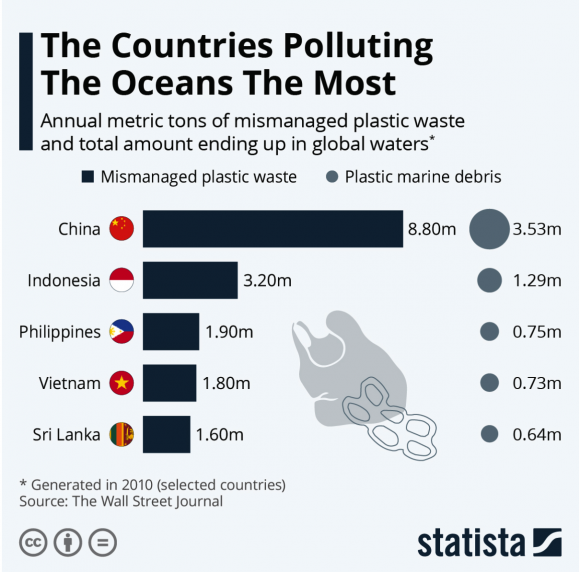
Evidence of the serious health risks associated with electronics waste or “E-Waste” is gradually coming to light including, changes in lung function, thyroid function, hormone expression, childhood growth rates, cognitive development, mental health, and genotoxicity. ASEAN governments are, or have put in place environmental policies restricting, and in some cases outright banning E-Waste shipments from neighboring countries within Southeast Asia, as well as outside of region including, Canada, the United States, Australia, New Zealand, and Brazil. However, even with such laws in place issues of inadequate resources for proper enforcement remain a problem, especially as illegal, “informal recycling” operations have taken hold in certain areas of Southeast Asia.
A substantial tonnage of MSW continues to be mismanaged (largely among low-to-middle income ASEAN nations). Open dumping on land and into waterways, as well as unregulated incineration, inadequate funding of waste management programmes, lax governmental enforcement, and a severe paucity of proper waste management infrastructure all have profound implications on the long-term viability of health and environment throughout Southeast Asia, and beyond.
* Xaypanya, P, Takemura J, Chiemchaisri C, Seingheng H, and Tanchuling MAN, Characterization of Landfill Leachates and Sediments in Major Cities of Indochina Peninsular Countries—Heavy Metal Partitioning in Municipal Solid Waste Leachate. Environments; 5(65);1-24. 2018. doi:10.3390/environments5060065
